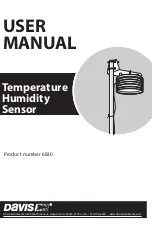
Chapter 2
Installation and Configuration
2-18
ni.com
Basic PXI System Configuration
1.
Launch MAX.
2.
In the
Configuration
tree, click the
Devices and Interfaces
branch to
expand it.
3.
If the PXI system controller has not yet been configured, it is labeled
PXI System (Unidentified)
. Right-click this entry to display the
pop-up menu, then select the appropriate controller model from the
Identify As
submenu.
4.
Click the
PXI System
controller. The chassis (or multiple chassis, in a
multichassis configuration) is listed below it. Identify each chassis by
right-clicking its entry, then selecting the appropriate chassis model
through the
Identify As
submenu. Further expanding the
PXI System
branch shows all devices in the system that can be recognized by
NI-VISA. When your controller and all your chassis are identified,
the required
pxisys.ini
file is complete.
The PXI specification allows many combinations of PXI chassis and
system modules. To assist system integrators, the manufacturers of
PXI chassis and system modules must document the capabilities of their
products. The minimum documentation requirements are contained in
.ini
files, which consist of ASCII text. System integrators, configuration
utilities, and device drivers can use these
.ini
files.
The capability documentation for the chassis is contained in a
chassis.ini
file provided by the chassis manufacturer. The information
in this file is combined with information about the system controller to
create a single system initialization file called
pxisys.ini
(PXI System
Initialization). The NI PXI Platform Services software generates the
pxisys.ini
file from the
chassis.ini
file.
Device drivers and other utility software read the
pxisys.ini
file to
obtain system information. For detailed information about initialization
files, refer to the PXI specification at
www.pxisa.org
.
For a softcopy tutorial on how to configure your LabVIEW Real-Time
Target, expand
Remote Systems
in the
Configuration
tree in MAX, select
Set up my system
for the first time on the main window, and open the
LabVIEW Real-Time Configuration Tutorial.
















































